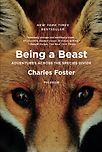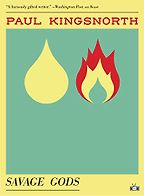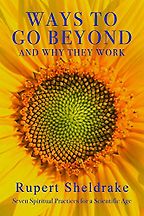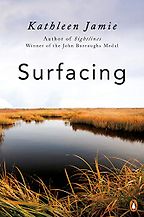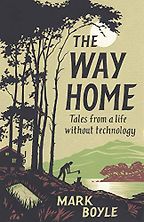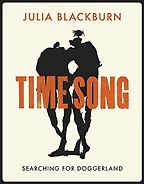So, Charles, 2019 marks our third year in a row discussing the best nature writing published each year. So how do you think nature, as a genre, is doing in 2019?
I think it’s become depressingly petrified and conservative. There aren’t many surprises. When you go to the nature writing shelves in a bookshop, you rarely get a sense of vertigo or imminent ambush. That worries me, because we should feel nervous and expectant and out of our depth whenever our ideas are about to be smashed up – and the natural world constantly takes the sledgehammer to our ideas; to our presumptions and our presumption. The wild is the ultimately iconoclastic domain. If we’re wise, that’s why we go there. The wild takes us back to bare rock, to start building our ideas all over again on that rock, or (even better) it convinces us that building is a thoroughly stupid thing to do and that we should wander and gather and sleep out instead. ‘All reality is iconoclastic’, wrote C S Lewis. Quite right: and unless something or somebody leaves my ideas in pieces, I tend to doubt that that thing/that person is real.
Get the weekly Five Books newsletter
There are a couple of recurring tropes in many of the nature books that have appeared over the last year or so. First: ‘I go to a wild place, and I feel redeemed by it.’ And, second: ‘I go out into a wild place, and I feel sad at the thought that it’s all about to be destroyed by the evil machine.’ Those are both very good things to feel. But is there any room on the bookshelves for yet another iteration of these themes? Books that say these things are fine if the object of the writing is to make the writer feel fulfilled or significant or to improve her mood, but not if the point is to say something new. It seems rather fraudulent to expect anyone to buy and read something that isn’t new. And saying something new and real means smashing up the ideas that have been created by the old nature writing. There should be a speedy evolution in the genre, powered by violent (though gracious and respectful) destruction of what has gone before. That, after all, is what nature itself does all the time with cliffs and genes and reefs and species. Only if nature writing is doing that too is it being faithful to nature.
So I’m a bit bored by the genre, I’m afraid, and I’m embarrassed to admit it. This sounds really arrogant and presumptuous, but there’s not a lot of daring on the part of the writers, and so the readers don’t get the sense of danger that you should get if you walk through a wood – let alone swim through a huge wave – or look closely at anything in the world.
Right. What I like about the authors on the list that you’ve put together for us is that there are some really headstrong characters in there. So are these books bucking the trends that you’ve just identified?
Yes. You won’t find those two old, tired, timorous tropes in the ones I’ve picked. I imagine that the headstrong books you’re thinking of are Paul Kingsnorth’s and Kathleen Jamie’s?
And Mark Boyle as well. But let’s talk about Kingsnorth first: his new book is Savage Gods. It’s about moving to a smallholding in Ireland with his family in search of a more contented life, getting back to the land. But it hasn’t quite worked out that way.
That’s right. He’s always written about places, and it seems to me that he’s always written about places in an attempt to grope towards a notion of ‘place.’ He served a strenuous apprenticeship in environmental activism before he decided that the activist agenda assumed an optimistic view of what was possible, and that in prosecuting that agenda as it is conventionally conceived you have to jump into bed with the forces of environmental destruction: become part of the machine; part of the problem.
He decided that all that we can do is to recover and to re-tell the stories that have formed us as humans: stories that tell us how our shapes have been determined by the pressure on us from the non-human forces of the world. For me to say ‘all we can do’ is a stupid way to put it. There is colossal creative and redemptive power in these stories. So he left activism of the old kind, and then he left the UK, and now lives on the west coast of Ireland with his wife and his two young children.
His whole ethical and literary life had been determined by a sense of dispossession. So he bought a field in Ireland thinking that by doing so he might finally come home. That he might finally know home. That he might finally know a place and therefore know what place itself was about.
“He says that he can’t write anymore; that he may never write again”
It’s not clear if he’s been successful, but if he has, it’s been – at least for the time being – at the expense of his writing. He says that he can’t write anymore; that he may never write again. That’s for two main reasons.
First: to be a writer, you’ve got to be uncomfortable. You have to be an outsider. You have to deny yourself many reassuring certainties – not least because the only certainties in the real world are distinctly un-reassuring. You have to allow the generation in yourself of pressure that will eventually spurt out in prose or poetry.
Second, and more fundamentally, language itself – and I’m sure this is your experience too – doesn’t correspond at all faithfully to the world. It always stalls; it always becomes self-referential and self-reverential. It’s also wedded to dialectic, which is an agent of that evil machine, which is the enemy of the natural world. And so it’s our enemy – whether or not we are writers – because all humans are part of the natural world.
So this book is Paul’s reaction against the damage that he sees language doing to him, and the damage that he sees language and dialectic doing to the world more generally.
Huh, that’s an interesting idea, that the dialectic and the natural world are opposing forces. I’m not sure how I feel about that. Certainly it questions the validity of ‘nature writing’ as a concept. Is it an argument that you yourself agree with, or can relate to?
Yes. Increasingly over the last few years, my writing has said, as Paul is saying: Please don’t read this book of mine. Because it’s written in human language, it necessarily misrepresents. The only experience worth having is direct experience, and language gets in the way of that direct experience. All I can do as a writer is to annoy my readers so much that they throw down the book and head outside, where, if they’re open to it, something worthwhile will happen to them.
I’m overstating things rather hysterically! Because I’m a writer, I have to believe – for my mortgage payments, my own peace of mind, and my own mouldering sense of self-worth – that there must be a way of using language in a way that undermines and subverts language and makes it do its proper job of relating to the world and relating the world. But there are moments (no, there are whole weeks) when I’m not at all convinced about that. Maybe I should resolve to use only onomatopoeic words; which have embedded in them something of the wind or the wave; to reject any words – and particularly words from the romance languages – which invoke abstractions rather than the concrete things out there. You can tell I’m having exactly the same sort of crisis as Paul. The difference is that I’m trying to write my way out of it. He’s more honest and radical than I am.
Well, crisis is good, according to Paul! He says: “Contentment is your deadliest foe.” He talks about writing as a process of always having a piece of fruit just out of reach. So are we wrong to think of the simple life as he’s living it – this hands on the grindstone, this in-the-garden-planting lifestyle – as a source of fulfilment?
It’s very dangerous to put words into Paul Kingsnorth’s mouth, but I think he’d say that, in order to get your epistemology right (what a pompous word: it’s mine, not Paul’s: I mean ‘knowledge of the way that things are’), you have to try to see things through children’s eyes. Paul’s children are his main educators, as my children are mine. It’s not the digging of the garden itself that has given him the connection he feels with the natural world, but digging the garden as his children dig it with him.
That’s the one of the great insights of the romantic movement, isn’t it? We’ve got to become like little children again. Children have forgotten so much less than we have forgotten about the things that matter.
Talking about looking at the world in a new way, let’s move onto Rupert Sheldrake. His new book Ways to Go Beyond also considers at the, the larger experience of nature and being. It’s a sequel to Science and Spiritual Practices, which we discussed back in 2017. Why do you think it amongst the best nature writing of 2019?
Everything Rupert Sheldrake has done has been a broadside against the reductionism that has characterised biological science for a long time. When Rupert brought out A New Science Of Life back in 1981, the then-editor of Nature, Sir John Maddox, described it as an “infuriating tract.” “The best candidate for burning there’s been for many years.”
In a later broadcast Maddox said: “Sheldrake is putting forward magic instead of science, and that can be condemned in exactly the language that the Pope used to condemn Galileo, and for the same reason. It is heresy’. It’s an extraordinary and revealing admission. Sheldrake had offended a sacred paradigm.
That’s quite a response.
So Sheldrake had prompted the editor of Nature to assert, without any apparent embarrassment, that the reductionist creed is just that: a creed. It’s a statement of essentially religious belief. The concordance of that religious belief with the way the world really is has been called dramatically into question over the past few decades. And by nobody more than Rupert Sheldrake.
And why is it a ‘nature book’? Well, because (I think) lots of people who want to recover a sense of what the natural world is and what it means find themselves inhibited from doing so because they feel that they have to use the language of conventional reductionist biology to describe the natural world and to describe their feelings towards it. And that language is woefully and obviously inadequate. Sheldrake points out that the language is inadequate because the reductionist paradigm is inadequate.
That makes sense. Science as straitjacket.
People rightly feel that to say that we are nothing but our genes, or our molecules, or other component parts – is to miss out on an awful lot. That nothing-buttery (the idea that we are nothing but lumps of matter, and that’s the end of the story) doesn’t do justice to the astonishing complexity and beauty of the world, or to our sense of significance and interconnectedness. We are indeed lumps of matter, but that doesn’t say everything that can and should be said. This isn’t an argument for naïve creationism or intelligent design, of course. The universe is an evolved and evolving place, and we know a good deal about the mechanisms by which complexity is generated. But we don’t know it all. A lot of humility and a lot of truly scientific scepticism are urgently needed. I see that humility and scepticism in Sheldrake. We’re back to iconoclasm, aren’t we?: our existing representations of the world, including the representations that we couch in scientific language and theory, fall short of the wonder of things; they constantly need to be dismantled and reconfigured.
Sheldrake is the cataloguer par excellence of the difficulties with the reductionist worldview – a world view which is teetering on the edge of oblivion. He points out its shortcomings better than anyone else. He helps us to go into a wood and feel wonder, and feel all the other things which the natural world should be producing in us, without worrying that it’s in some way scientifically disreputable.
Well, we should touch on that point. Sheldrake himself is a former Cambridge biologist, but is now best known for this more spiritual approach, which has seen him accused of pseudoscience. People can be hesitant to engage with his writing for that reason. But you feel that he has valuable insight, and it’s worth laying those criticisms aside?
Lots of the august canons of biological reductionism have fallen. For instance we now know that the old model of genetic determinism is the exception rather than the rule. It is possible to say in a few cases: ‘Right, you’ve got the gene for X. That means you’re going to get X’. But usually it is not so simple. We now know that there is a very fluid, articulate conversation between genes and environment. The effect of environment on genes is profound. It switches genes on and off. To put it another way, Lamarck, who proposed the inheritance of acquired characteristics, and was reviled for so long, is back – and this time he’s got tenure! The name ‘Professor Lamarck’ doesn’t appear on his door in the department: Instead the label reads ‘Epigenetics’.
So, this book, together with his earlier book, Science and Spiritual Practices, is a map of some of the portals which have traditionally been used to reach the more-than-human world. That of course includes the natural world. All the practices increase the porosity of our shells, help us to see our own place in the nexus of things, and help us get closer not just to God (don’t be put off by the word ‘spiritual’) but also to badgers and leaf-veins and molecular biology and the faces in clouds.
Because I suppose that’s what we’re looking for when we’re going out into nature, and in nature writing: that sense of being part of something bigger than ourselves.
Yes. We’re looking for that and, as we’ve discussed, I think we’re also hoping for our own models, which we know to be hopeless, to be trashed – enabling us to make a clean start, more consonant with the sorts of creatures we are. Most of us have an intuition – which becomes a conviction when we look into the eyes of our dogs – that humans, although very special, are intimately connected with non-humans. This is a blindingly obvious thing to say, a trite evolutionary truth. But much of our personal, and all of our environmental, malaise is caused by denying it. We can’t really understand ourselves as individual humans unless we know the sorts of animals that we are as a species. We want to feel the fellowship with non-humans which is our biological heritage. We want to know our place in the web, and to be able to say, when a six-legged, compound-eyed relative lands on our head: ‘That’s one of our lot. His face is in our family album’. That sort of reflection allows us to locate ourselves: to feel less disorientated and alone: to know where we belong – not only in the genetic matrix, but also in geological time, which is otherwise terribly scary. Sheldrake can help us to have a more holistic understanding of our nature, and the nature of nature, and therefore of the relationship between us and the other-than-human world.
Absolutely. Well, the third nature book you’ve chosen as part of your selection of the best nature writing of 2019, is different in subject matter, but I think Kathleen Jamie could probably relate to a few things that you said there. Tell me a little bit about Surfacing.
It’s a collection of essays about apparently very, very different things – from ancient seal meat to Chinese politics – and very different times – from the Neolithic to the distant future. As a writer, and as a publisher, you need quite a lot of chutzpah to put things so disparate together in one book, and you need a real, rather than a theoretical belief, that everything is connected. But Kathleen Jamie has a good track record of having that nerve and displaying that belief.
It seems to me that everything Jamie has written has been about the natural world. It also seems to me that everything that has ever been written by anybody has only ever been about the natural world. Even a guide to the Manhattan subway has been written by a wild creature about another wild place. As David Abram says, “there are only relatively un-wild places.” A Manhattan subway station is just a relatively un-wild place.
“It seems to me that everything that has ever been written by anybody has been about the natural world”
But books that explicitly acknowledge their wild authorship and their wild subject matter are better than books that don’t, and Kathleen Jamie has always expressly acknowledged that she’s a wild thing writing about wild places.
The main characteristic of a really wild creature is that it pays attention, and Kathleen Jamie is one of the great attention-payers – but not in the narrow, minute, overbearing, obsessive way that’s become fashionable in modern nature writing, where pages are spent in a breathless, pathologically adjectival and downright boring appraisal of a twig. This fashion does injustice to the non-twigs in the wood. It distorts the picture of the wood. A wood is not just a twig. But as Jamie walks through her world, everything is seen in its right relationship to everything else: she pays attention to context: to juxtaposition. And to do that for the human world of Chinese politics as well as to the expressly non-human world of a wood is a proper, useful job for a writer.
Jamie is a very highly acclaimed poet as well as a nonfiction writer. This new book follows up two beloved essay collections, Findings and Sightlines. Does Surfacing attain the same heady heights of those books?
It’s a quieter, less agonised, less angry book than those. But because it’s a quieter book, the wind and the waves are more audible than Kathleen Jamie’s words, and that is a great thing to say about any writer. I’m not suggesting that Jamie characteristically gets in the way of her subject: far from it. She’s a great writer – more interested in her subjects than in her words about those subjects. But I’ve already expressed my suspicion of language as a medium for conveying reality. Language is particularly hopeless and destructive if it is used colonially in a direct approach to reality. Reality doesn’t seem to like that: it retreats. Jamie shows that sometimes (though unpredictably), if words are used softly and obliquely, reality isn’t alarmed, and it comes slowly out of its burrow to be seen.
Let’s talk about Mark Boyle’s The Way Home. He records a life without modern technology. This is a book that, geographically and thematically, has a lot in common with Paul Kingsnorth’s. I think they know each other.
They’re great friends. They meet and drink beer in the pub every week.
What does Mark add to Paul’s discussion of getting back to the land?
Well, he went off grid, holed up in a cabin in Galway. That meant cutting the umbilical connection with technology and virtual realities that most of us have. He had no laptop, no phone, and no electricity. He wrote the book on paper. Remember that stuff? And with a pencil – one of those wooden things with graphite running through the middle. The book is a reflective account of what happened.
It was not a stunt, it was not a pose. It was often lonely and uncomfortable. And you can read it if you want, with a sense of schadenfreude, as a catalogue of those discomforts. But it’s a lot more than that: it’s an inquiry into what it means to live as a thriving human being. It’s part of the age-old search for the good life.
Five Books interviews are expensive to produce. If you're enjoying this interview, please support us by donating a small amount.
Living that way involves asking what sort of creatures we are. Very few people have the nerve to look at themselves, or to look at their species, as Boyle does. The results of his examination are not terribly surprising, but they’re vitally important. All of us have to choose whether or not we’re going to be ourselves. Most of us delegate the construction of our personalities to big corporations, or to industrial society, or to other abstract entities, or to networks of people we’ve never met and are never going to meet. But we don’t have to do that. We can opt for the adventure of being alive. And of being us.
Few of us will. It’s scary and hard, as Boyle shows, and everything around us insists that it’s impossible. But Boyle shows us that it can be done, and that if we do it we’ll be immeasurably richer.
Boyle is quite Thoreauvian. He lives by his principles, and is willing to assert them publicly, and I admire that about him. When I interviewed him earlier this year, he touched on the subject of contentment, like Kingsnorth: “I think contentment is something healthier to aim for than happiness.” But isn’t this the opposite of what his friend was arguing: that we should beware contentment?
I don’t think they’re saying different things. Paul Kingsnorth is saying that contentment’s disastrous if you’re going to be a writer. Paul identifies himself as a writer: it’s a crucial part of what he is. But I don’t think Mark Boyle self-identifies as a writer. Or, if he does, ‘writer’ would be much further down his list of self-defining words than ‘writer’ is on Paul’s own list. Paul would love to be content, which is one of the reasons why he sees the writing life as dangerous: writing stops contentment; contentment stops writing. So Paul Kingsnorth the writer has to adopt an approach to contentment that’s different from the approach of Paul Kingsnorth the family man.
Yes, got it. And it’s interesting, I think, to see these books as having grown out of these weekly meetings over beer, and discussing their respective back-to-the-land reinventions. But let’s move onto your last selection for the best nature writing of 2019.This is Julia Blackburn’s Time Song: Searching for Doggerland, Doggerland being the land bridge that once linked the UK to mainland Europe.
Yes. Under the North Sea, between East Anglia and the Netherlands, lies Doggerland. It wasn’t there for long. It appeared when the ice of the last Ice Age retreated, and it was a paradise for Mesolithic hunter-gatherers. Then meltwater engulfed it. But trawlers regularly haul bits of Doggerland to the surface. They get mammoth tusks and rhinoceros horns. I have here on my desk a hyena coprolite which came from Doggerland. I was in Norfolk over the weekend, and my children and I found a large lump of Mesolithic peat lying on the beach. It was full of still glistening birch bark.
Julia Blackburn, who lives near the Suffolk coast, went in search of Doggerland. Why? Well, partly, I think, because, like Doggerland, her dead husband is both near and invisible – and this book is an elegy for him. He was recently engulfed, but is still present somewhere out there. And also this: There’s comfort for mortals in knowing that both time-past and time-future is vast, and we’re not. It sometimes helps to see how big time is. If you think hard enough about Doggerland, you can laugh at the posturings of governments, or the potential of disease, or whatever it is that’s worrying you.
“She mixes her late husband’s ashes into yogurt and eats him”
Blackburn’s method, as with all her books, is both elusive and allusive. It’s a series of impressionistic dots, which, with the perspective of distance and time, resolve into a picture. It’s tremendously clever writing. As readers we preen ourselves at the end of the book, thinking that we’ve assembled the picture ourselves. Of course, it’s her artistry that’s done it, but the fact that we think it’s our work is the mark of a very good writer indeed – just as a really smart barrister convinces the judge that the barrister’s own argument is actually the judge’s own.
Blackburn is wistful but never for a moment self-pitying. She’s splendid company. She potters around prehistoric bone collections in East Anglian kitchens and garages. She misses nothing. She understands how time works, and how we are lumps of clay spinning on the wheel, moulded by the landscape, and how the landscape reaches even in through the double glazing of those East Anglian centrally-heated houses to shape us.
There’s one striking point in the book when she describes how she mixes some of her late husband’s ashes into yogurt and eats him.
Wow.
I think that a writer who eats her own husband should be taken very seriously when she talks to us about fields and birds and tractors and the other things which are the usual fare of nature writers.
Absolutely. It’s profoundly moving, I think, to think in terms of ‘deep time’; of time on huge scale. Should thinking of Doggerland as it was, and how different the world was then, provide us comfort while we are facing the existential threats of climate change, and our fast-changing world? Or is that the wrong thing to take away?
I think, when we meditate on it, it gives us a perspective that we don’t normally have: which is that to be alive at all as a human being is to live on the edge of a precipice. We have always done so as a species. We always do as individuals. We’re only ever a moment away from eternity. Julia Blackburn gently reminds us of that – and cushions the blow by reminding us that time is vast and we’re very tiny and that accordingly our own mortality perhaps isn’t the crushing catastrophe that it seems to us individually to be.
I suppose that brings me back to this question of nature writing, and whether its purpose is in making us feel part of something bigger than ourselves. Are we seeking comfort when we pick up a nature book?
I think we’re looking for sensual confirmation of our connectedness with the non-human world, which at some level we all intuit. Once we feel that connectedness, we are comforted, because we realise that we’re not alone.
Aloneness is the main source of our angst, isn’t it? We feel we’re locked up in our own houses, in our own heads, condemned to commune only with our own thoughts.
Good nature writing can remind us that we have endless defining relationships, and not just with other humans (although human relationships are far and away the most important relationships) but also with an almost infinite number of other non-human animals. That makes us feel less vertiginously isolated.
Interview by Cal Flyn, Deputy Editor
December 10, 2019
Five Books aims to keep its book recommendations and interviews up to date. If you are the interviewee and would like to update your choice of books (or even just what you say about them) please email us at [email protected]

